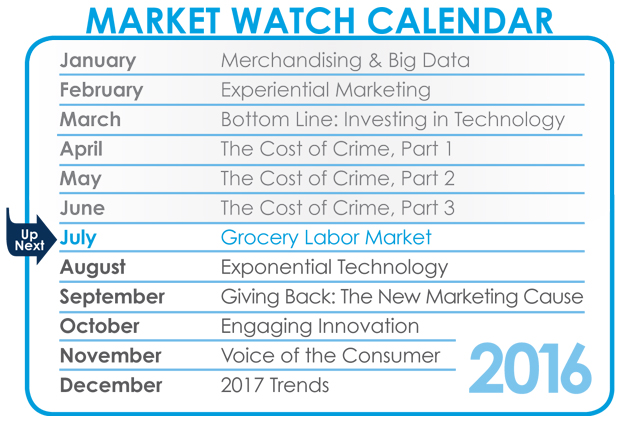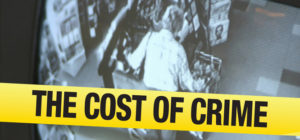 By Retail News Insider
By Retail News Insider
Think shoplifting is a victimless crime? Think again. Whether you’re a retailer or a consumer—you pay the price for retail theft. Here’s how: Each year, U.S. retailers lose over $40 billion dollars due to the loss of physical inventory (shrink), according to the National Retail Federation (NRF). The majority of those losses come from internal or external theft of product from retail shelves and warehouses. And when products go missing, everyone pays—through lost profits, less inventory to choose from and ultimately higher prices. In the end, it’s estimated that retail theft costs the average American family over $420 every year.
This final feature in our three-part series on the cost of crime in retail takes a look at how retail theft has evolved—from individual shoplifters to organized teams of associates and others in supply chain working together to score major hauls. We give you the brazen examples of in-store theft and what retailers must do to protect themselves.
Understanding the Landscape
The majority of retail shrink is due to three main causes: “petty” shoplifting, organized crime and employee theft.
Let’s start by taking a closer look at shoplifting. According to the National Association for Shoplifting Prevention, most shoplifters are opportunists—that is, they don’t plan to steal in advance. The decision to pocket products is often made in the heat of the moment. In fact, many shoplifters will make legitimate purchases during the same visit. Sometimes that can even be part of the strategy—taking bar code stickers from less expensive items and placing them on higher-priced items in order to benefit from a “discount” when they checkout at the register.
As Bob Moraca, Vice President of Loss Prevention for the NRF, points out, “it may be called petty theft, but it’s not a kid stealing a candy bar. It’s much more sophisticated. There are pretty substantial things going out the door.” The NRF estimates the average shoplifting incident results in about $318 worth of losses.
Organized retail crime (ORC) rings represent a more premediated and professional version of what we typically think of as shoplifting. These gangs are generally headed by a “fence”—a person who plans to acquire and profit from stolen merchandise. The fence works with a number of “boosters”—individuals paid to shoplift the items the fence wants.
“Organized crime commonly targets more high-end stores, handbag stores, grocery and drug stores, and electronics stores,” says Moraca. “They want to grab as much product as possible and of the highest value and get it out the door so they can convert it to cash somehow—either selling it or bringing it back in fraudulent returns.” The NRF estimates ORC costs retailers $450,000 for every $1 billion in products sold.
Employee theft also has a big impact on retailers’ bottom lines. “The [cost of the] average internal case is much higher than the typical shoplifting case,” says Lisa LaBruno, Senior Vice President of Retail Operations for the Retail Industry Leaders Association. “Associates can often steal longer before they are identified, whereas shoplifters are often caught quickly.” This bears out in the latest security survey by the NRF, where retailers put the average cost of an employee theft case at over $1,500.
In addition to being less likely to be caught quickly, employees may also have the advantage of knowing the inner workings of the retailer. They may have access to larger quantities of products in the storeroom or warehouse, as well.
Best Practices: How Retailers Can Prevent Theft
It’s important to point out that the problem of shrink due to theft is well-known to retailers. It’s not an issue they are burying their heads in the sand about. In fact, two-thirds of retailers reported decreases in losses due to theft in 2015—a testament to the strides they are making in combatting it. So what are those retailers doing that others can learn from?
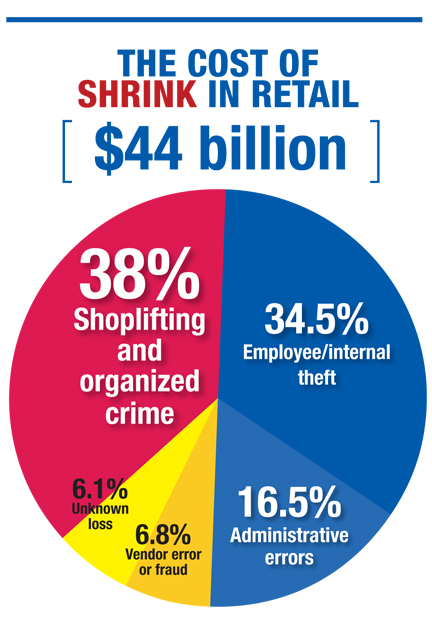 “The loss prevention programs that are best-in-class are those that effectively manage shrink as a business function; analyzing the issues and leading a cross-functional coalition of merchants, operators and solution providers to deliver results,” says Paul Jones, Vice Chairman of The Loss Prevention Foundation. “These are the same programs that invest in their loss preventions teams through education and certification.”
“The loss prevention programs that are best-in-class are those that effectively manage shrink as a business function; analyzing the issues and leading a cross-functional coalition of merchants, operators and solution providers to deliver results,” says Paul Jones, Vice Chairman of The Loss Prevention Foundation. “These are the same programs that invest in their loss preventions teams through education and certification.”
LaBruno echoes the importance of education, not just for loss prevention associates, but for all employees. She says retailers can help reduce both internal and external theft by “creating a culture of honesty and getting employees to take ownership of shrink. You need to educate employees on what shrink is and how it affects them.”
LaBruno goes on to explain that when employees understand shrink can negatively impact job opportunities within the store as well as compensation, they’re more motivated to take ownership of it. This can not only encourage employees to point out suspicious behaviors they see in their colleagues, but also understand the need for security measures such as bag checks, cash register video surveillance and random audits.
In addition, associates need to be educated on potential warning signs to watch for in shoppers. “Retailers need to train employees to look for suspicious activity—like shoppers coming in with booster bags—bags lined with a foil material so when criminals put merchandise in there and leave the store, the article surveillance system doesn’t go off,” says Moraca. Nervous body language, lack of eye contact, and baggy or heavy clothing worn during warm weather are other red flags.
Retailers can also put technology to good use in preventing and deterring theft. According to Moraca, some of the technology strategies that have the biggest return on investment (ROI) for retailers include closed-circuit TV systems, public-facing monitors and article surveillance tools like electronic tags, security cases and smart shelves.
Visible technologies like cameras let would-be thieves know they’re being watched and can often help deter shoplifting. More discrete methods can help catch those who choose to steal anyway. For example, smart shelves use radio-frequency signals to monitor the amount of product on a shelf and can send alerts to store personnel when potential theft takes place, such as a large amount of items being swept off all at once.
INSIDE THE CRIMINAL MIND: RISK VS. REWARD
Why does theft persist? A variety of social and economic factors play a role, but perhaps one of the most interesting to consider is the risk vs. reward ratio retail thieves face. Consider these facts:
- The average shoplifter is caught only 1 out of every 48 times he or she shoplifts.
- In some states, getting caught with and convicted of stealing up to $100 worth of merchandise carries no jail time—only a fine (up to $250 for the first offense in Massachusetts, for example).
- If a shoplifter steals an average of $75 worth of merchandise 48 times, but only gets caught and fined once, he or she can still make a hefty profit—$3,350 to be exact.
Sources:National Association for Shoplifting Prevention, Commonwealth of Massachusetts

Combining CCTV with facial recognition takes security to the next level.
LaBruno points out that retailers should also stay informed about evolving technologies that promise to take security one step further (perhaps even one step ahead of the criminals)—things like biometrics, facial recognition and prescriptive analytics. For example, a number of retailers in the U.K. have are using facial recognition to help identify known shoplifters when they walk into the store. Photos of shoppers entering the store are taken automatically and run against a database of known criminals. If there’s a match, an alert is sent to the store. Biometrics can be used to track and restrict employee access to certain areas.
For employee-theft in particular, both Moraca and LaBruno agree that transaction
verification and exception-based reporting programs built into point-of-sale systems are invaluable. These systems track and monitor transactions and employee behavior, analyzing the resulting data to highlight potential 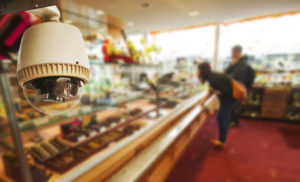 anomalies (and potential theft). Taking it one step further, these systems can be combined with prescriptive analytics, so they not only alert retailers to potential problems, they also recommend the best course of action to take based on previous results.
anomalies (and potential theft). Taking it one step further, these systems can be combined with prescriptive analytics, so they not only alert retailers to potential problems, they also recommend the best course of action to take based on previous results.
In addition to preventive strategies, LaBruno also points out that when theft does occur, particularly ORC, it’s critical for retailers to collaborate with law enforcement—and even each other. She notes that when retailers share information about theft with other retailers and law enforcement, they can combine their investigative efforts and potentially their losses in order to prosecute the criminals at a higher level with higher punishments which may help reduce future theft.
For individual cases of shoplifting, many retailers are benefiting from participation in restorative justice programs. These programs aim to educate shoplifters about the harms of retail theft, and often require them to pay the retailer back for the items stolen.
According to Jones, “programs that are designed by criminal justice professionals and coupled with crime-specific educational material… make a meaningful difference in recidivism rates.” These programs provide another important tool that retailers can use to enhance their approach to reducing and deterring theft. They not only reduce the drain on criminal justice resources—they also offer a cost-effective solution for the retailers.
Is the Investment Worth the Payoff?
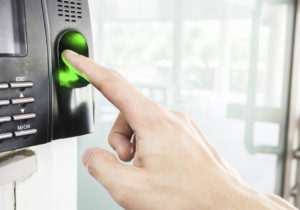
Biometrics can deter and track theft.
With the great lengths loss prevention professionals must go to and the costs of their efforts increasing every year, it’s natural to wonder whether the investment is worth the payoff. LaBruno acknowledges “all of these investments are expensive, and retailers need to do analyses to see what the ROI is as it relates to their specific circumstances.”
She also stresses that retailers cannot discount the significant risks theft poses from a financial, brand reputation and customer service perspective. Increased theft can mean immediate as well as future losses, not to mention potential physical harm to both associates and customers.
“As ORC gangs are being taken more seriously, there’s more at stake for the offenders, so they’re getting bolder and more violent,” says LaBruno. Nearly one in five shoplifting apprehensions in 2013 resulted in some type of physical or verbal violence, according to an NRF survey.
As for concerns that some deterrent strategies might harm the consumer experience, both Moraca and LaBruno believe the majority of customers understand the need for such measures. Moraca adds that when obvious deterrents are in place, such as visible monitoring systems, “most consumers feel more comfortable that they’re not going to be victimized by crime.”
Overall, experts agree that as long as security measures are implemented thoughtfully, with retailers using careful analysis and education to strike a balance between the protections they put in place and the impacts on associate and consumer perceptions, the benefits for all involved outweigh the potential inconveniences.
